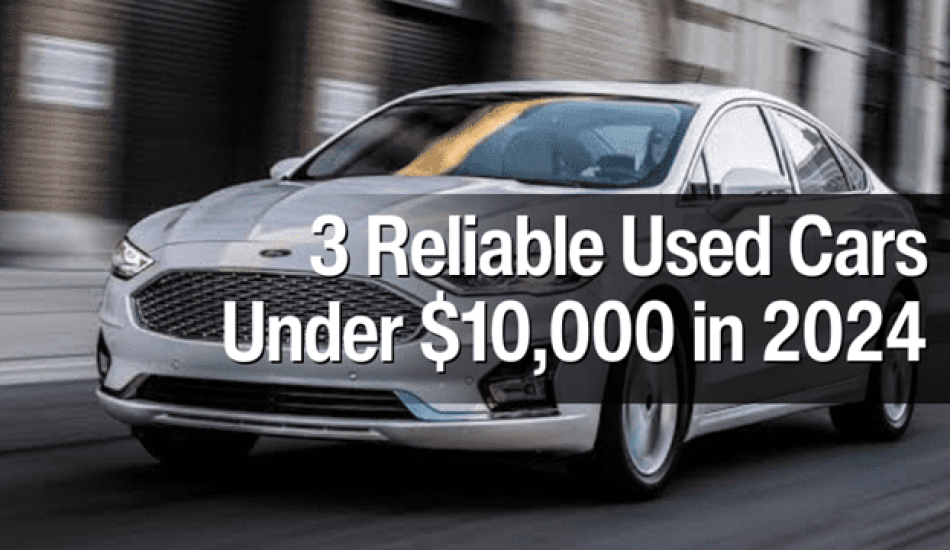
According to the AutoTrader Price Index Report of Q1, 2024, the average price of a new car in Canada is $66,422, and buyers can get it at a 5.3% interest rate! While the interest rate has dropped since last year, it is still high enough to make new automobiles inaccessible for most Canadians. What do you do when a new car just isn’t affordable? You opt for used cars!
The microchip shortage and supply chain disruption in 2021 caused a slump of almost 26% in global automobile production. While the supply of semiconductors is all but over, the aftereffects prevail in 2024 as automobile manufacturers try to catch up with the pent-up demand for new cars. The imbalance of demand and supply of new cars has caused a hike in interest rates, which means that more and more Canadians are opting for affordable pre-owned vehicles.
Compared to the hefty sum of $66,422, Canadians can buy a used car for $37,662 on average. From understanding credit scores to the complexities of down payments, this blog will be a roadmap that will lead you to your dream car without breaking the bank.
Step 1 – Check Your Credit Score
A Credit Score, in simple terms, is a number that reflects your financial health. It is a report of your financing history, conveying to lenders the certainty with which they can trust you to return a loan. A good credit score is crucial for car financing. Both your final payment as well as your interest rate are dependent on this one crucial factor. A good credit score attracts lower interest rates and discounts on financing.
· A positive payment history – The borrower pays their bills on time. This includes utility bills, health and insurance bills, fees, etc.
· Length of credit history – The duration for which a borrower has been borrowing and returning money. The longer the duration, the better your credit score.
· Credit Versatility – Credit score is higher if the borrower has borrowed and repaid different types of loans as it shows the ability of the borrower to handle different loans responsibly.
· Number of New Credits – The number of new credit accounts the borrower has opened in a certain time period. If the borrower has availed of multiple new loans in a short period of time, the credit score may decrease.
In Canada, there are two ways of finding your credit score. These are:
Find your credit score by visiting credit bureaus like TransUnion Canada, Equifax Canada, and CreditKarma Canada. Almost all provide credit score reports for free. Follow the instructions on the website to sign up and get your credit score.
Step 2 – Decide Your Budget
Now that you know your credit score, the next step is to set a budget. How much are you willing to spend to buy the car you want? Your budget depends on the following factors:
· Your monthly income,
· Your credit score,
· Your debt-to-service ratio, i.e., your existing debt compared to your income,
· The amount of money you have as a down payment,
· The cost of driving the car (operational costs).
While it is understandable that you may be tempted to set a higher budget, we recommend being extremely realistic. Consider your monthly disposable income, i.e., the money you have left over after paying your essential living expenses, existing debts, taxes, and any other financial obligations. Taking on more monthly loans than you can pay off will become a hassle in the long run.
The 20/4/10 equation is a good rule of thumb when financing cars. According to this equation, the borrower should pay at least 20% down payment, choose a duration of four years for debt financing, and keep their monthly payments around 10% of their gross monthly income. However, this is not a must and you can adjust the loan terms according to your preferences. Just make sure that you take into account your monthly disposable income and the monthly cost of driving the car.
Auto Loan Calculators are an excellent way to help determine your budget. Use the Fine Auto Zone Car Loan Calculator to determine monthly car payments. Simply add the price of the car in CAD, the down payment you will pay, and the duration of car financing.
Step 3 – Evaluate Car Financing Options
There are multiple options to choose from when it comes to car financing. Knowledge about the auto car financing industry is your best ally when buying a car. Here are the things that you should know:
Car Loan or Car Lease?
A car loan is a personal loan that you take from a car dealership or a financial institution, like a bank or an independent third-party licensed auto financing company, to buy the car. The process of obtaining a personal loan is straightforward – fill out and submit the loan application along with the supporting documents required by the financing institutions (this can include proof of monthly income, credit report, etc.). If your application meets the requirements and your documents are verified, you get the loan. You may get the loan as quickly as on the same day.
When you get a car loan, you make monthly payments to return the amount borrowed to buy the car plus the interest at which the institution lent you the money. The car is essentially yours. Once you have paid off the debt in full, the ownership is transferred to you. Since the car is yours, you have the responsibility for its maintenance and upkeep. However, some car loan plans offer full or partial warranty for free or additional payment. Compared to a car loan, a car lease is more like renting the car from a car lending company for a set duration, typically 24 to 48 months. The car is not in your name, and you are using the car for set monthly payments. The monthly payments are calculated based on the depreciating value of the car, interest rate, and company fees. Typically, the monthly payments in car leasing are lower than in car loans as the buyer is not paying the full value of the car.
Since the car is owned by the car leasing company, they bear the maintenance expenses. However, buyers are bound by mileage limits, i.e., users can drive up to X number of miles per year. The number of miles varies from company to company. Usually, up to 15000 miles are standard. When the lease ends, a user may return the car and walk away, or they may choose to buy the car at its residual value.
Banks, Online Lenders, or Car Dealerships?
Banks are the most common option to secure car loans. Since banks are well-established, they are more trustworthy. Moreover, since they are in competition with many other banks offering car loans, banks offer competitive interest rates and terms. If you have a good credit report and a high credit score, you are likely to secure the desired loan amount on good terms from a bank.
Online lenders are commonly the choice of borrowers with a bad credit score. They are quick to approve loans but may offer higher interest rates. Moreover, make sure that you opt for a licensed and reputable online lender, as scams are abundant online.
Finally, you can opt for loans from a car dealership. Dealership financing is the most convenient car financing option as you avoid the hassle of dealing with a third party. You select the car from your chosen dealership and deal with them for financing, subtracting banks, credit unions, or online lenders. It becomes a one-stop purchase rather than having to deal with multiple stakeholders.
Dealership financing is more secure than online lenders, as authorized dealers are well-established licensed companies. Moreover, they offer competitive interest rates, almost at par with banks. Other advantages include quick processing and less strict requirements. Fine Auto Zone has a hassle-free car loan application process, apply for credit from the comfort of your home and get results within days!
Fixed or Variable Interest?
Fixed loans, as the name suggests, are fixed throughout the life of the loan. In simple terms, you have to pay the pre-determined monthly payment amount until the loan is paid off. On the other hand, variable loans vary with the ups and down in the market. This means the interest rate keeps fluctuating throughout the life of the loan.
Fixed and variable loans both have some risk. In fixed interest rate plans, if the market goes down and interest rates decrease, you still have to pay back the bank at a higher interest rate. On the flip side, in variable interest rate plans, you don’t know when the market will go up and down, so you have the opportunity to pay a lower amount if the market is down but are also at risk of paying a substantially higher amount if the market goes up. Most opt for fixed interest rate plans as they carry lower risk.
Car Loan with A Bad Credit Score
A credit score below 660 is generally considered to be a bad credit score in Canada. With a bad credit score, you are less likely to get a loan from traditional financing institutions, such as banks. Even if they do approve your credit application, they are likely to set a higher interest rate and stricter terms of loans. If you have a bad score and are struggling to get your loan approved by banks, car dealerships may be a safe option. Car dealerships like Fine Auto Zone offer credible automobile credit lines to all buyers. Apply for a loan with us today to discuss the terms of the loan further.
Step 4 – Select the Right Dealership & Car
The best way to select the right car dealership is to search local dealerships online. Visit the websites of the dealerships, explore their inventory of available cars, verify their credentials, and check online reviews of the dealership. You can also join local Facebook groups to get authentic feedback about local car dealers.
A good dealer will provide full transparency. Make sure that the dealer has listed the specifications of the car on the website. For example, Fine Auto Zone provides complete details of cars listed on their website. As you can see in the image below, buyers can clearly see the make, model, year, mileage, engine type, and other details from the get-go. Moreover, buyers have the option to request more information about the vehicle, such as the full vehicle history report, by selecting the “request more information” button.

Once you have settled on a dealer, you may select your preferred car from their available inventory. Make sure the car comes with a full vehicle history report. We also recommend comparing prices online and negotiating the price with the dealership accordingly.
Tip: Always visit the dealer in person and take the car for a test drive before finalizing the deal.
Step 5 – Understand the Loan Terms & Finalize Your Paperwork
Once you have finalized the car, it’s time to close the deal. If you have chosen to finance the car from the dealership, your job is pretty easy. Understand the loan terms, i.e., the total cost of the car, the down payment you will pay, the interest rate, the insurance or warranty coverage the dealership will offer, the duration of the loan, and the monthly amount you will pay.
Once you are clear about the terms, sign the paperwork and set up monthly withdrawals. You must sign the bill of sale, have proof of insurance, and complete registration information for the car. Every province has its own requirements when finalizing a used car deal, so make sure to check out the provincial requirements beforehand.
In Calgary and the rest of Alberta, a buyer needs a Bill of Sale, valid Alberta insurance, and identification to register the new vehicle. Moreover, an inspection certificate from Alberta Transportation is required for all first-time Alberta registrations of used vehicles.
Buyers may use valid Alberta licence plates on the new vehicle for up to 14 days from the date on the Bill of Sale. During this grace period, the buyer must carry proof of ownership, insurance, and valid registration for the licence plate being transferred to the vehicle.
Conclusion for How to Finance a Used Car in Canada? A Step-by-Step Guide
There you have it – buying a used car in Canada is as easy as 1, 2, 3! With the above information in hand, you won’t be daunted by the industry jargon and big words like down payment and variable interest rates. Choose a car loan option that is the best for your circumstances by checking your credit score and setting a budget. Once you have selected the lender and the financing method, it is only a matter of selecting the best car from a credible local dealership to get the car of your dreams! Make sure to get the Bill of Sale, insurance, and registration information from the dealership when finalizing the deal. Good luck!




